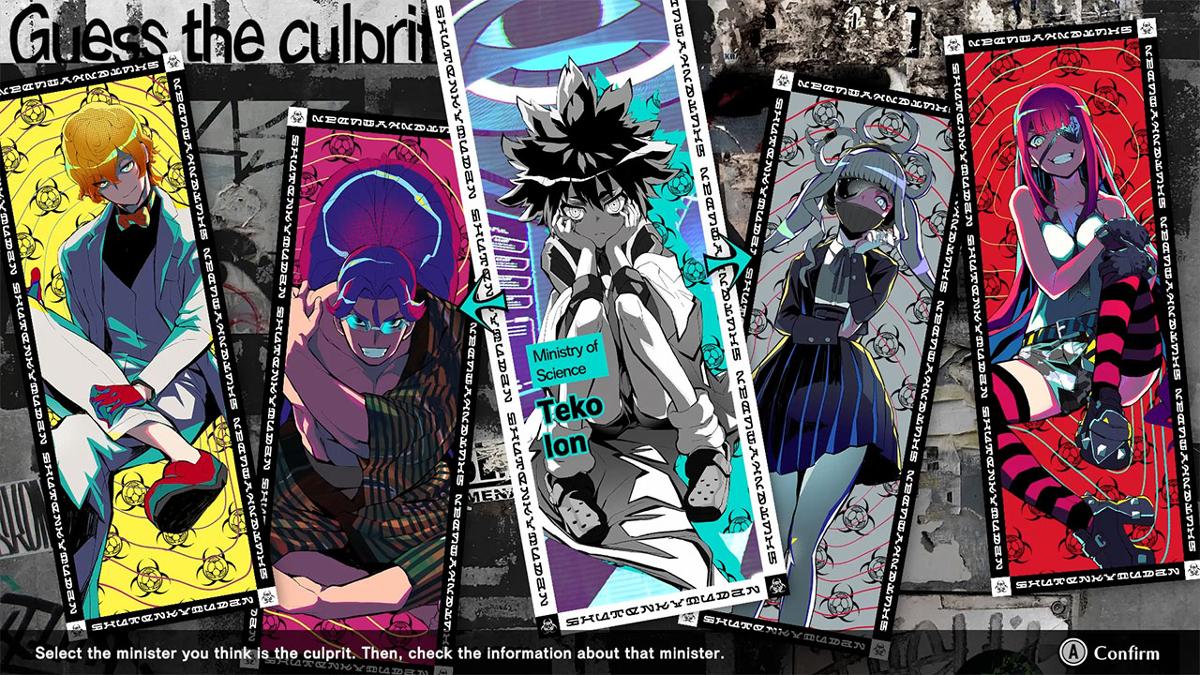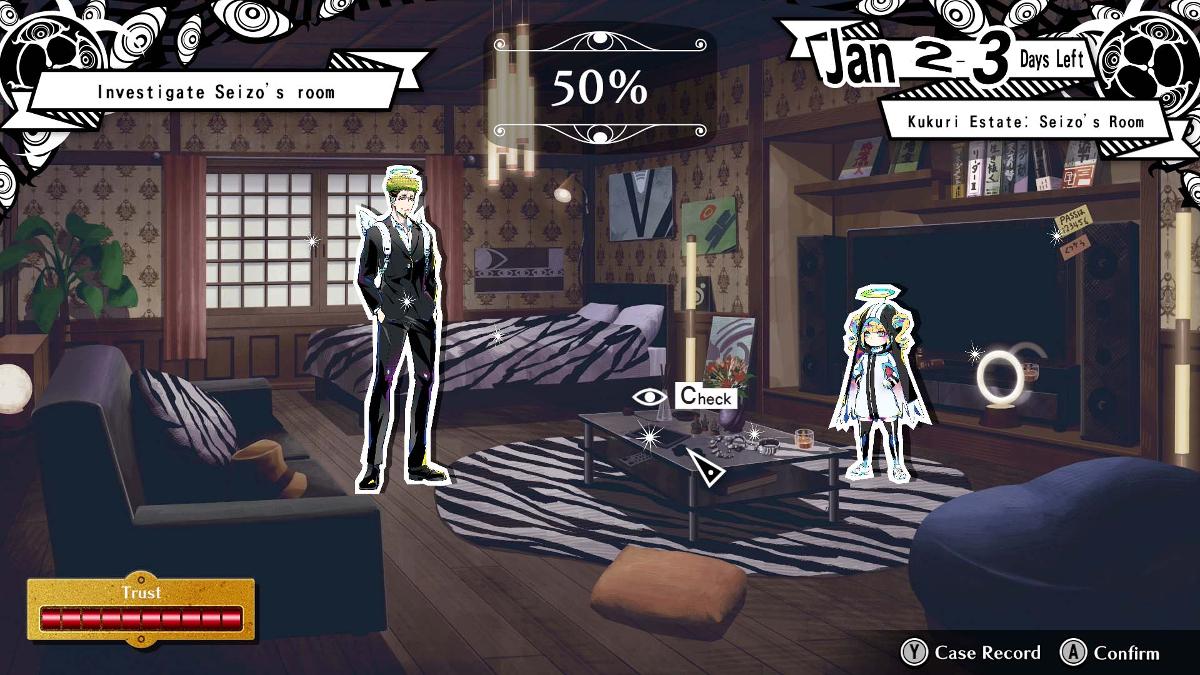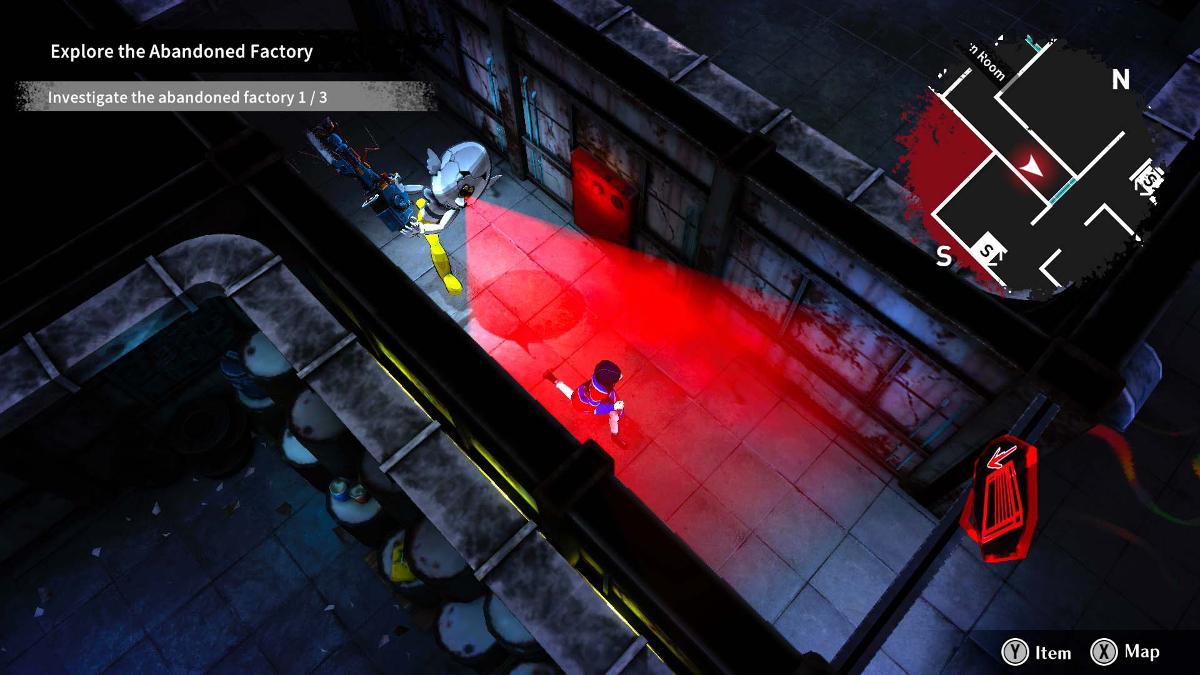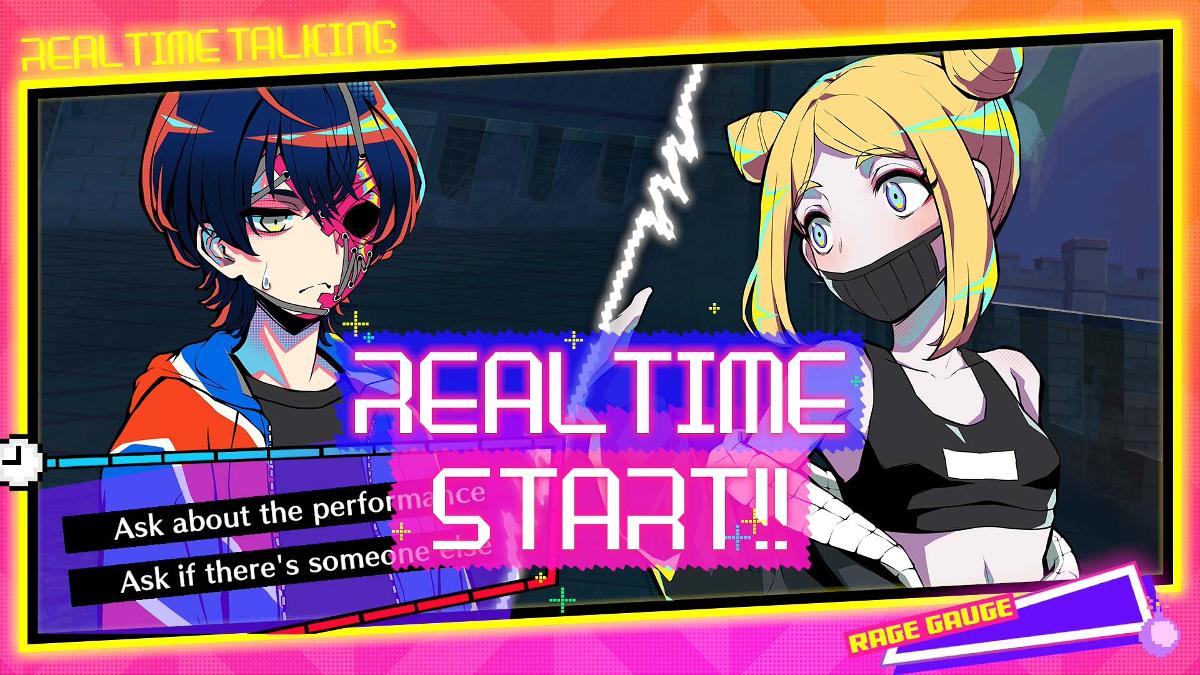Kazutaka Kodaka has had a busy year. In February he helped launch the free-to-play “extreme action RPG” Tribe Nine on Steam, iOS, and Android. In April, he watched as one of his finest works, The Hundred Line: Last Defense Academy, received praise from the gaming press. And just last month, he brought the world Shuten Order, the so-called “ultimate adventure game”. With five distinct gameplay styles nestled under an overarching mystery, it’s certainly one of Kodaka’s most ambitious narrative projects. But is it one of his best?
The story in Shuten Order is wild, even for a Kodaka production. You wake up in a hotel room, unsure of your surroundings or even yourself. When you open the front door, you’re greeted by two unlikely angels who explain that you were recently murdered (dismembered, in fact) and must now overcome God’s trial to fully restore your life. The angels guide you to the ministerial building for the Shuten Order, an apocalyptic religious organization that rules a small nation. Once there, they explain that one of the five ministers in attendance is the guilty party, and that you must identify them and kill them to set things right.

This is the central dilemma of Shuten Order, which informs all of its narrative and mechanical pathways. In just four short days, you must determine who killed you, and for what reason. And while the task is relatively straightforward, the distance between the question and the answer is anything but. In order to arrive at the truth, you must complete five different routes, each featuring a different minister and a different gameplay style.
It’s an audacious, ambitious idea for a visual novel, and it certainly lends a feeling of diversity to the proceedings. But it’s also the game’s Achilles heel. Despite all of its positive pieces — and there are a lot — Shuten Order, in the end, is inconsistent. Some of its routes are simply better than others.
The finest route by far is the Ministry of Justice, which takes the form of a mystery adventure. You and minister Kishiru Inugami must solve a murder in the Kukuri family, an affluent clan in the middle of an inheritance dispute. Not only does this route feature the most charismatic minister but also the best self-contained story, with plenty of twists, turns, and a-ha moments. Even the gameplay is entertaining, if a bit simple. You must interrogate suspects, place clues in the right order, and “snap” at suspicious statements in order to pick them apart. If the entire game proceeded in this way, it wouldn’t be a bad thing.

Another fairly good route involves the Ministry of Health, which takes the form of an extreme escape adventure — very much in Kodaka’s wheelhouse. Here you must find the exit to a mysterious locked room by completing dangerous trials and puzzles. It’s decently entertaining, although a bit shallow.
Shallowness is a recurring issue throughout these routes. The visual novel Ministry of Science route, for example, features basic binary choices. The romance adventure Ministry of Education route is a dumbed-down dating simulator. The stealth action horror Ministry of Security route, which should be the best of all, isn’t really about stealth and suspense; you simply move between points of interest, avoiding contact with a skulking killer.
In an interview with Nintendo Life earlier this year, Kodaka said “this work is influenced by every visual novel I have ever loved.” And that love definitely shows. Unfortunately, by highlighting five different gameplay styles, the overall experience becomes somewhat diluted. It would have been better to choose two or three and focus deeply on them.

If nothing else, the existence of five discrete sub-stories combined with a longer, overarching narrative, means a very long running time. You should set aside 50 hours to experience all the ministerial investigations, uncover the truth, and experience one of two endings. This is a very substantial game, although not one without some tedium. It takes a while to get going.
The best parts of the game, unsurprisingly considering it’s a love letter to the visual novel genre, are storytelling, art direction, and music — all things that excel at setting the mood. Several masters are responsible for the story, including Kodaka, Takumi Nakazawa, and Takekuni Kitayama. No matter any mechanical flaws, it’s hard to complain about the game’s narrative.
That said, be warned: there are some questionable English translations and more than a few typos. It’s clear the localization effort needed a little more time in the oven. Luckily, the excellent Japanese VO helps overcome these missteps.

As for the music, it’s great; what else would you expect from Masafuni Takada? While some of the songs sound too similar to his work in Last Defense Academy, the overall soundtrack is impressive, especially in the way it masterfully travels across five distinct routes, always offering the appropriate music for the genre.
Even more impressive, though, is the art direction. Indeed, it’s the single greatest thing about the game. All the illustrations are the work of Simadoriru, who previously worked on Last Defense Academy and Master Detective Archives: Rain Code. They’re spectacular. Not only are the character designs wildly creative, the color palette is a revelation. There are lines of bright pink, yellow, and cyan streaking throughout the game. It’s arresting.
Shuten Order may be Kazutaka Kodaka’s most ambitious work, but it’s not his best. Its multi-genre experiment, while bold and brave, doesn’t work as intended, resulting in an uneven adventure with several shallow, overlong vignettes. The game’s successes in story, music, voiceover work, and aesthetic elevate the proceedings but not enough to erase that central shortcoming.
Full Article – https://www.vgchartz.com/article/465633/shuten-order-ns/

